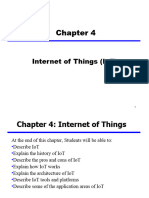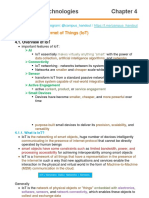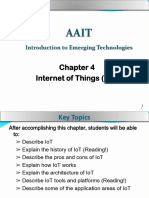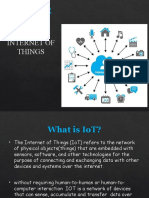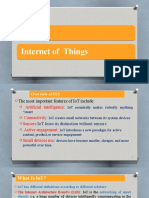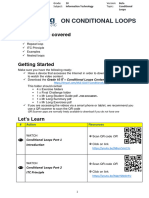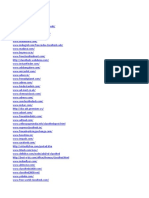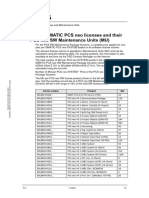0% found this document useful (0 votes)
16 views35 pagesChapter - 4 - Internet of Things (IoT)
The document provides an introduction to the Internet of Things (IoT), covering its definition, history, advantages, disadvantages, and architecture. It explains how IoT works through a network of smart devices that collect and exchange data, and outlines various application areas such as smart homes, healthcare, and agriculture. Additionally, it discusses the challenges associated with IoT, including security, privacy, and complexity.
Uploaded by
sami1998bornCopyright
© © All Rights Reserved
We take content rights seriously. If you suspect this is your content, claim it here.
Available Formats
Download as PPT, PDF, TXT or read online on Scribd
0% found this document useful (0 votes)
16 views35 pagesChapter - 4 - Internet of Things (IoT)
The document provides an introduction to the Internet of Things (IoT), covering its definition, history, advantages, disadvantages, and architecture. It explains how IoT works through a network of smart devices that collect and exchange data, and outlines various application areas such as smart homes, healthcare, and agriculture. Additionally, it discusses the challenges associated with IoT, including security, privacy, and complexity.
Uploaded by
sami1998bornCopyright
© © All Rights Reserved
We take content rights seriously. If you suspect this is your content, claim it here.
Available Formats
Download as PPT, PDF, TXT or read online on Scribd
/ 35




